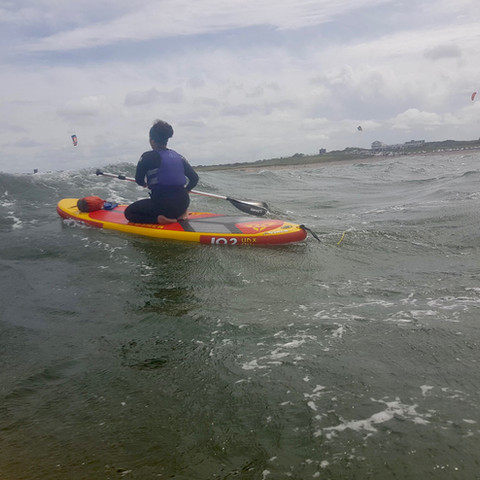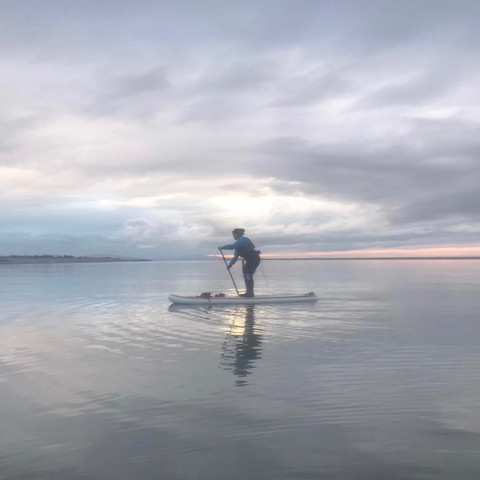Attempting SUP on the sea
- Adya Misra
- Feb 22, 2021
- 3 min read
Updated: Feb 23, 2021
Everyone who knows me knows I love kayaking in the sea. Sea kayaking has given me so much over the years: boat handling skills, long days of exploring and a wonderful bunch of humans that I can call friends.
I don't have my sea kayak yet (its coming soon though), so lockdown 3.0 over winter meant the only way I can get on the water is stand up paddleboarding. Thanks to the extremely cold conditions in the UK this year (thanks Climate Change), our canals froze so paddling on flat freshwater wasn't an option for some time. I tried paddleboarding in the sea very few times last year; my first attempt involved kneeling on my board for three hours battling big breaking waves, surf and strong winds pushing me towards Ireland. The high point was when I fell off the board at some point, couldn't feel my legs thanks to constant kneeling and the board did a few somersaults over my head. 100% do not recommend.
The following attempts involved very short but beautiful paddles in a sheltered bay. I was nervous to be out on the sea but it was so close to the beach and I was dressed for immersion so I felt well prepared. In the last two months, I've started going for regular paddles out at sea so I can gradually build confidence and skills. I've also started dipping in the sea to build my tolerance to cold water in the hope that if I did fall in, I would stay in control and not get too cold.
Last week, I managed to plan a short paddleboarding trip of about 4km, partly paddling against the tide and some off-shore wind to keep things interesting. It was hard work to stand on that day since there was a lot happening on the water but it was a short and confidence building trip. This weekend I managed to go paddleboarding for 7km on the sea, standing all the way.

It's been nerve wracking and fun to try something new and attempt to get better at something over the winter. I've been kayaking in the sea and doing tidal planning for a long time so it was nice to be able to learn something new while building on the knowledge I've gained over the years.
Here's what I learnt about paddleboarding in the sea:
The Mersey has a large tidal range of about 9 metres and the water moves pretty fast. There is also a lot of dumping surf which is fun if you enjoy that kind of thing.
It's best to get to the beach early and watch the water. Tides can sometimes do strange things like not follow our timetable or fit our expectation.
Paddleboards are a bit more sensitive to tidal changes and small swell. This is minimised by working on strength and skill but worth bearing in mind.
Check the wind direction. Strong off shore winds make the sea look flat but you can get pushed out dangerously far out and it can be hard to paddle back to shore.
Dry trousers and dry suits don't offer the range of motion needed to paddle in the swell.

If you're interested in paddleboarding out at sea, there are many things to bear in mind whether you're going alone or going in a group. Introduction to tidal planning and coastal navigation is a day long course and I highly recommend it if you're interested. Checking the weather and tides isn't as easy as looking at a few apps on your phone, so ask someone who has done a lot of tidal planning to help you understand how to plan trips. A lot of coaches are doing coastal navigation courses online so I recommend getting on a course if you have the chance!
I bought my board exactly a year ago and I'm quite proud of the progress I've made as a paddleboarder. I could barely stand on a calm canal last spring and now I am doing longer journeys out at sea. I sometimes think becoming a student again has helped me think about how I coach people on the water, helping people set goals and achieve them gradually. If you have any questions about getting into coastal paddleboarding, feel free to contact me. Happy paddling!








Comments